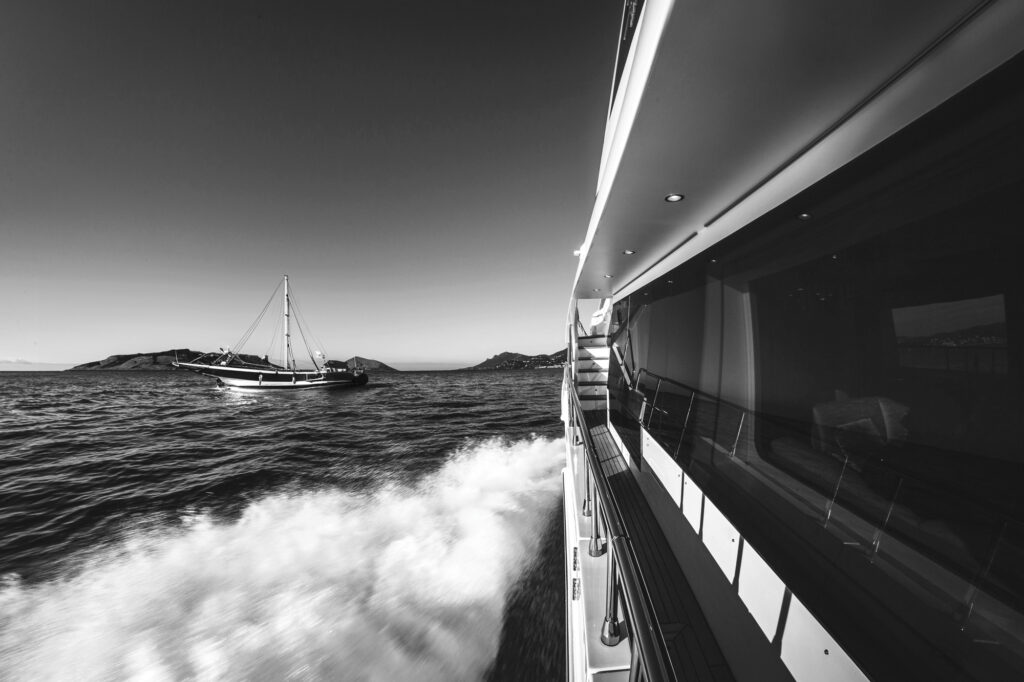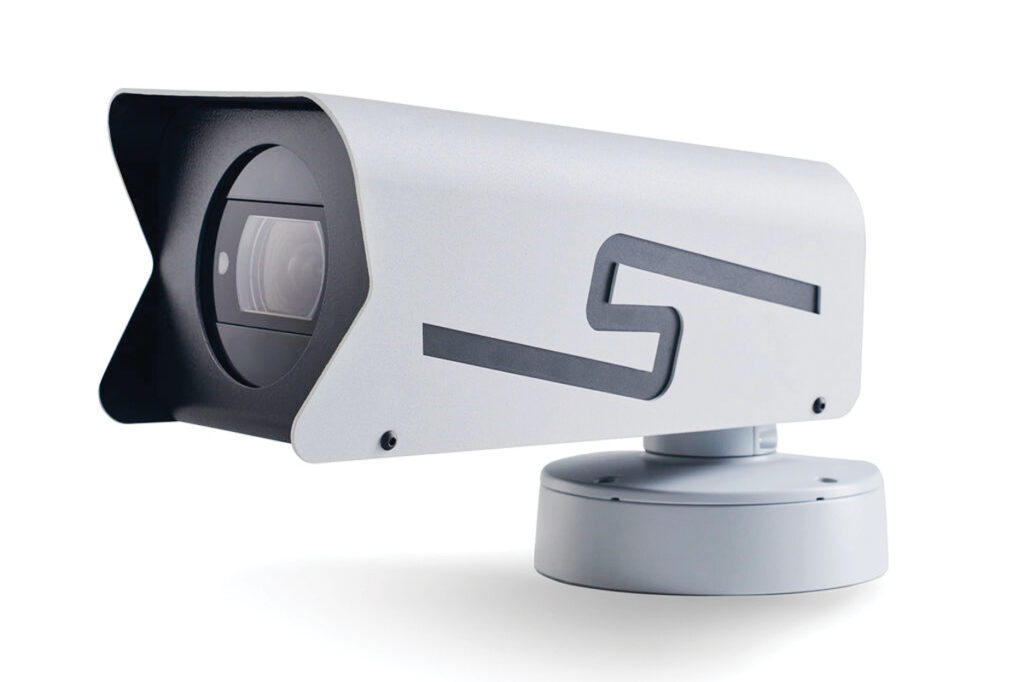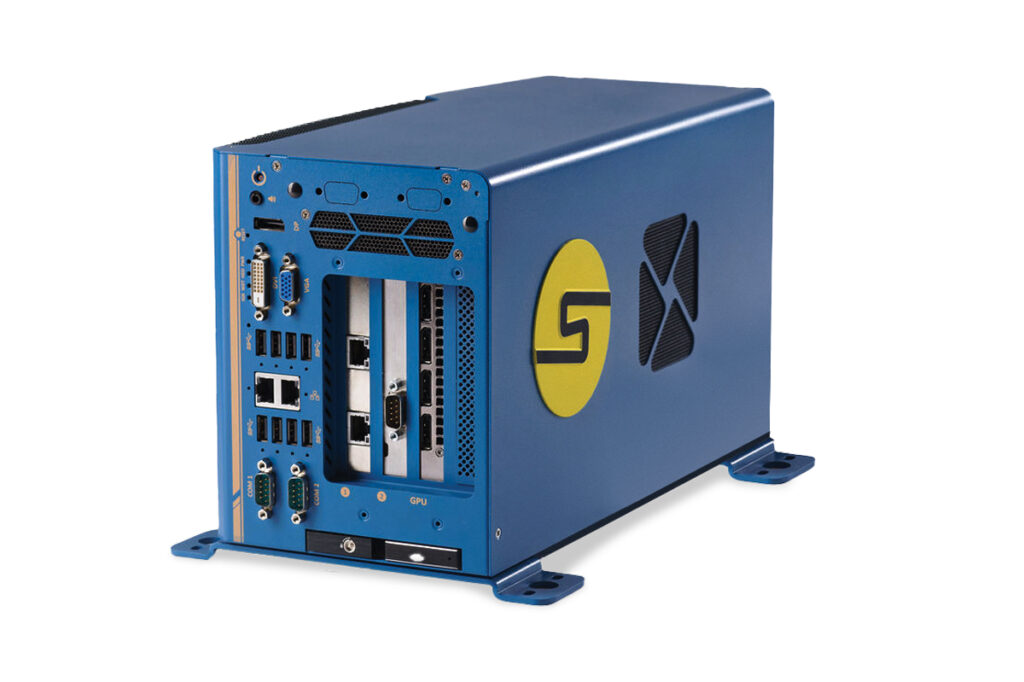
Some lessons must be learned the hard way. Take the Atlantis, an 80-foot express cruiser that was motoring 3 miles off the coast of St. Augustine, Florida, this past May during a Memorial Day weekend voyage. The yacht was reportedly operating under mostly clear skies when it struck an object, likely a large metal marker denoting a submerged dredge pipe. At 11:37 a.m., the US Coast Guard in Jacksonville received emergency notification via VHF channel 16 that Atlantis was sinking. The Coast Guard dispatched a boat and contacted the St. Johns County Fire Rescue Division, which rescued two mariners.
While it’s unclear how Atlantis’ crew failed to spot the marker, better watchkeeping and collision-avoidance technology likely could have prevented this accident.
Watchkeeping often involves long periods of monotony punctuated by occasional moments of stress. AI-enabled technologies can ease this burden. Sea Machines’ AI-ris (pronounced “eye-ris”) Computer Vision Sensor alerts recreational mariners about dangerous targets. Although it doesn’t autonomously evade danger, the system processes targets in milliseconds, supports fast cruising speeds and enhances situational awareness.
AI-ris ($27,900) is an optical-based system that uses AI technology called computer vision to detect, classify, geolocate and track multiple targets. The system accomplishes this via a custom machine-learning model that Sea Machines trained on millions of images. “AI-ris is designed to enhance situational awareness for all vessels under power that are 33 feet or longer,” says James Miller, Sea Machines’ AI-ris product manager.

The system has a forward-looking daylight camera and a rugged black-box processor. It also has a touchscreen user-interface screen, or boaters can substitute a compatible Furuno or Raymarine multifunction display, or a generic touchscreen display. AI-ris requires NMEA 2000 connectivity to access the vessel’s GPS/GNSS sensor, and it can be spec’d with a Sea Machines thermal-imaging camera.
The daylight camera must be mounted at least 25 feet above the waterline to deliver its full range of 5 nautical miles. AI-ris can simultaneously classify and track 50 targets. In terms of target size, AI-ris can detect a 13-foot object at 0.25 nautical miles; at 1 mile, it can detect a 49- to -59-foot object; and at 5 miles, it can detect a 246- to 295-foot object. AI-ris reportedly has 99 to 100 percent accuracy when it can place 20 pixels on a target.
Given that this target classification wizardry resides in a machine-learning model, the optical-based system requires imagery. The daylight camera captures 30 frames per second, has a 90-degree field of view (horizontal and vertical), and uses a low-light mode to capture moon- and starlight. The 10-megapixel sensor yields 4K onscreen imagery that’s shared with the processor via an Ethernet cable.
Processed imagery is then streamed onto the user’s screen. Users can take screen grabs and capture video, a feature that Miller says can be useful in documenting incidents.
“The custom machine-learning model was trained on over 25 million images of vessels and objects [taken] from a variety of vessels operating globally in different sea and lighting conditions,” Miller says.
These images have yielded more than 35 million examples of marine targets—but the system doesn’t work like a search engine. “Rather than looking up a vessel or object within a database, the computer-vision model recognizes important objects in view by its understanding of how these objects appear and behave,” he says.
AI-ris does this very quickly. Miller says it will detect, classify and track multiple targets in less than 250 milliseconds. Depending on environmental factors, the number of targets and the distance to the object, he adds, “This can occur in significantly less time.”

On the user-interface side, AI-ris creates a 2D augmented-reality display on its networked screen. Targets are graphically boxed, color-coded and placed into four classification buckets. Yellow indicates powerboats, blue denotes sailboats, and green represents marine mammals. White refers to miscellaneous objects, including aids to navigation, kayaks, swimmers and logs. Miller says Sea Machines is adding eight additional classification buckets soon.
Alternatively, AI-ris can display a radar-style target-range viewer that depicts the vessel in the center, with outward-extending range bands. Targets appear as color-coded triangles, providing classification along with visual range and bearing information.
Users can set guard zones (think radar) in both modes. Once a target is detected, classified and tracked within a guard zone, AI-ris provides visual and auditory warnings. These begin with a banner at the top of the screen; optional auditory alerts are played twice, 20 seconds apart, while the escalatory auditory alarms are played every 20 seconds until the alarms are manually cleared.
“Customer feedback emphasized that the system shouldn’t become something that an operator has to constantly attend to; rather, [it’s] something that supports safe navigation,” Miller says. “For this reason, we have concentrated on a fine balance between passive and active notifications.”
While AI-ris has interesting capabilities, it has limitations like all technologies. For example, its 25-foot mounting-height requirement is a big ask for smaller yachts. The camera’s 90-degree field of view leaves a 270-degree blind spot unless the vessel also carries an automatic identification system receiver or radar. The system isn’t compatible with third-party cameras, and it can’t draw information from the vessel’s vector cartography to verify the position of, say, aids to navigation. As of this writing, the system also can’t autonomously command the autopilot to avoid collisions.
That said, AI-ris does provide unflagging situational awareness within its field of view. It supports vessel speeds up to 45 knots, and technology is on the way that will provide the same daylight-camera functionality on the company-supplied thermal-imaging cameras. Sea Machines is planning a release that will allow a yacht with AI-ris, a Sea Machines SM360 advanced autopilot system, and a Rolls-Royce power and bridge system to dodge dangerous targets autonomously.
For now, if the goal is to enjoy less-memorable Memorial Day weekends than the crew on Atlantis experienced, the Sea Machines AI-ris system provides a tireless eye on the horizon.
Lifelong Learners
AI-ris is based on a model that has already been trained on more than 25 million images, but more data equals increased safety. Sea Machines collects new imagery using a fleet of test boats and working with customers who share voyage data. The company then releases yearly updates that expand the model’s identification capabilities.









